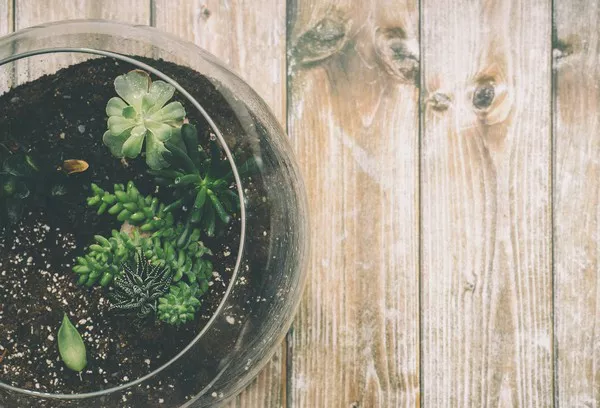Succulents, with their captivating and diverse array of shapes and colors, have gained immense popularity among plant enthusiasts and home gardeners. These resilient plants have adapted to thrive in arid conditions by storing water in their fleshy leaves and stems. With a vast variety of succulents available, each boasting unique characteristics, this article delves into the world of succulents, exploring their various types, care tips, and popular uses.
Understanding Succulents: A Botanical Overview
Succulents are a group of plants belonging to various botanical families, characterized by their ability to store water in specialized tissues. The term “succulent” is derived from the Latin word “succus,” meaning juice or sap. This adaptation allows succulents to survive in environments where water is scarce, such as deserts and semi-arid regions.
Succulents can be found across several plant families, including Crassulaceae, Agavaceae, and Cactaceae. While cacti are a well-known subgroup of succulents, not all succulents are cacti. Succulents exhibit an array of growth forms, from rosettes and spreading ground covers to tall columns and trailing vines.
A Plethora of Types: Classifying Succulents
Succulents are incredibly diverse, with a myriad of species and hybrids. Classifying them is often based on their growth forms and distinct characteristics. Here are some of the most notable types of succulents:
1. Echeveria
Echeverias are renowned for their stunning rosette shapes and vibrant, often pastel-colored leaves. These succulents are popular in both indoor and outdoor settings, and they thrive in well-draining soil and bright sunlight.
2. Sempervivum (Hens and Chicks)
Sempervivums, commonly known as Hens and Chicks, form clusters of rosettes that resemble a mother hen and her chicks. They are cold-hardy succulents and can tolerate various growing conditions.
3. Aloe
Aloes are recognized for their medicinal properties, as well as their striking foliage. They often feature thick, fleshy leaves with serrated edges and come in a range of sizes. Aloe vera, a well-known member of this group, is revered for its soothing gel.
4. Agave
Agaves are robust succulents known for their dramatic, architectural forms. With spiky leaves that can vary in size and shape, agaves are often used as focal points in xeriscapes and arid gardens.
5. Haworthia
Haworthias are compact succulents with windowed, patterned, or textured leaves. These plants are well-suited for indoor environments due to their modest size and light requirements.
6. Sedum
Sedums, commonly referred to as stonecrops, encompass a vast group of succulents that exhibit various growth habits. They are highly adaptable and can be found in rock gardens, hanging baskets, and ground cover applications.
7. Crassula
Crassulas offer diverse leaf shapes and growth patterns, ranging from the iconic Jade Plant (Crassula ovata) with its thick trunk and glossy leaves, to the stacked and intricate forms of Crassula perforata.
8. Lithops (Living Stones)
Lithops are distinctive for their mimicry of stones, camouflaging them in their native rocky environments. These unusual succulents consist of paired leaves and often produce daisy-like flowers.
9. Kalanchoe
Kalanchoes showcase vibrant, long-lasting blooms in addition to their succulent foliage. They are popular as potted plants and can thrive both indoors and outdoors.
10. Cacti
Cacti are perhaps the most recognizable group of succulents, with their iconic spines and often cylindrical shapes. These plants have evolved to survive in some of the world’s harshest environments, including deserts.
Caring for Your Succulents: General Tips
While succulents are known for their resilience, proper care is essential to keep them thriving. Here are some general care tips to consider:
1. Light: Most succulents prefer bright, indirect sunlight. However, different types have varying light requirements, so it’s important to research the specific needs of each plant.
2. Soil: Well-draining soil is crucial to prevent waterlogged roots, which can lead to root rot. Consider using a specialized succulent or cactus mix.
3. Watering: Allow the soil to dry out completely between waterings. Overwatering is a common mistake that can harm succulents.
4. Temperature: Succulents generally thrive in moderate temperatures. While some can tolerate frost, many are sensitive to extreme cold.
5. Potting: Choose pots with drainage holes to prevent water accumulation. Repot your succulents when they outgrow their containers.
Popular Uses of Succulents
Succulents have found their way into various aspects of modern life beyond traditional gardening. Some popular uses include:
1. Home Decor: Succulents add a touch of natural beauty to interior spaces. They can be displayed in a range of containers, from elegant ceramic pots to rustic wooden crates.
2. Weddings and Events: Succulents are increasingly incorporated into wedding bouquets, centerpieces, and favors due to their longevity and unique appearance.
3. Vertical Gardens: Living walls composed of succulents serve as artistic and functional pieces, providing greenery in urban environments with limited space.
4. Medicinal and Cosmetic Applications: Certain succulents, like aloe vera, have medicinal properties and are used in skincare and wellness products.
5. Xeriscaping: Succulents are ideal for water-wise landscaping, as they require minimal irrigation and can thrive in arid conditions.
Conclusion
The world of succulents is a captivating one, brimming with diversity and charm. From the intricate patterns of Haworthias to the towering columns of agaves, succulents offer an endless array of possibilities for both novice and experienced gardeners. By understanding the various types and their unique care requirements, enthusiasts can embark on a rewarding journey of cultivating and appreciating these remarkable plants. Whether adorning a windowsill, enhancing a wedding, or contributing to sustainable landscaping, succulents continue to shape modern horticulture in exciting and innovative ways.


